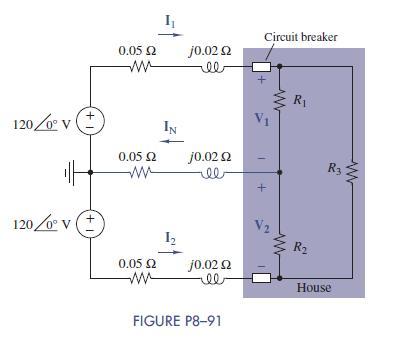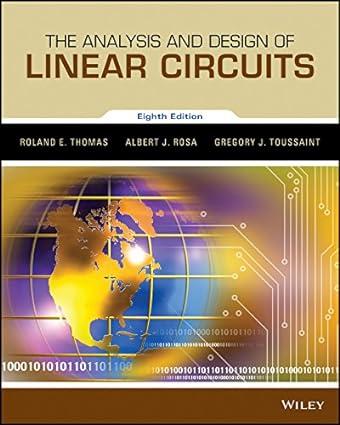891 Home Power Distribution The circuit of Figure P891 emulates a typical 60-Hz residential power system. There
Question:
8–91 Home Power Distribution The circuit of Figure P8–91 emulates a typical 60-Hz residential power system. There are three wires entering the house, two are called “hot” and the remaining one is called the return or “neutral.”
Each hot line is protected by a circuit breaker—but not the return. In the “house,” appliances such as lights, toasters, and electronics are connected between one of the hot wires and the neutral. Large appliances such as ovens and dryers are connected between the two hot wires. Appliances are designed to operate with either 120 Vor 240 Vwithin a few volts either way.
(a) Show that if R1 and R2 are equal, IN = 0 and V1 =V2.
(b) Consider a typical power draw where an R1 is, for example, a 130-Ω light bulb, R2 a 40-Ω toaster, and R3 10-Ω clothes dryer. Find the phasors V1 and V2 and find IN.
(c) Based on your results in
(a) and (b), is the neutral line even necessary? Open the neutral line, that is, force IN = 0, and again find the voltages V1 and V2. What is your answer?
Would your home be better protected by adding a breaker to the return line?
(d) Simulate the circuit in Multisim and validate your results.
The source frequency is 60 Hz.

Step by Step Answer:

The Analysis And Design Of Linear Circuits
ISBN: 9781119235385
8th Edition
Authors: Roland E. Thomas, Albert J. Rosa, Gregory J. Toussaint




